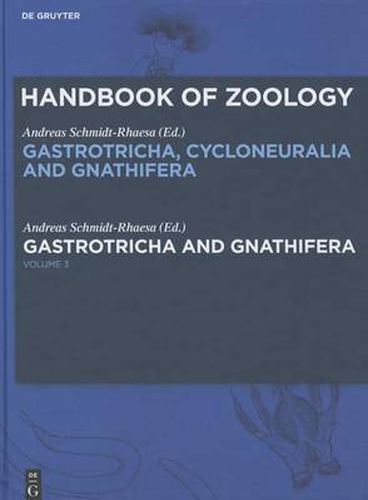Readings Newsletter
Become a Readings Member to make your shopping experience even easier.
Sign in or sign up for free!
You’re not far away from qualifying for FREE standard shipping within Australia
You’ve qualified for FREE standard shipping within Australia
The cart is loading…






This section of the Handbook of Zoology is intended as a comprehensive and exhaustive account of the biology of the taxa Gastrotricha, Nematoda, Nematomorpha, Priapulida, Kinorhyncha, Loricifera, Gnathostomulida, Micrognathozoa, Rotifera, Seisonida and Acanthocephala, covering all relevant topics such as morphology, ecology, phylogeny and diversity. The series is intended to be a detailed and up-to-date account of these taxa. As was the case with the first edition, the Handbook is intended to serve as a reliable resource for decades.
Many of the taxa of this volume are comparatively unknown to many biologists, despite their diversity and importance for example in meiofaunal communities (Gastrotricha, Rotifera, Gnathostomulida), their fascinating recent discoveries (Loricifera and Micrognathozoa), their importance as parasites (many nematodes, Nematomorpha, Acanthocephala) and their importance for evolutionary questions (e.g. Priapulida, Gastrotricha). The groups covered range from those poor in species (such as Micrognathozoa with 2 known species) to the species-rich and diverse Nematoda and their ca. 20.000 described species. While each taxon is covered by one chapter, nematodes are treated in several chapters dedicated to their structural, taxonomic and ecological diversity.
$9.00 standard shipping within Australia
FREE standard shipping within Australia for orders over $100.00
Express & International shipping calculated at checkout
This section of the Handbook of Zoology is intended as a comprehensive and exhaustive account of the biology of the taxa Gastrotricha, Nematoda, Nematomorpha, Priapulida, Kinorhyncha, Loricifera, Gnathostomulida, Micrognathozoa, Rotifera, Seisonida and Acanthocephala, covering all relevant topics such as morphology, ecology, phylogeny and diversity. The series is intended to be a detailed and up-to-date account of these taxa. As was the case with the first edition, the Handbook is intended to serve as a reliable resource for decades.
Many of the taxa of this volume are comparatively unknown to many biologists, despite their diversity and importance for example in meiofaunal communities (Gastrotricha, Rotifera, Gnathostomulida), their fascinating recent discoveries (Loricifera and Micrognathozoa), their importance as parasites (many nematodes, Nematomorpha, Acanthocephala) and their importance for evolutionary questions (e.g. Priapulida, Gastrotricha). The groups covered range from those poor in species (such as Micrognathozoa with 2 known species) to the species-rich and diverse Nematoda and their ca. 20.000 described species. While each taxon is covered by one chapter, nematodes are treated in several chapters dedicated to their structural, taxonomic and ecological diversity.